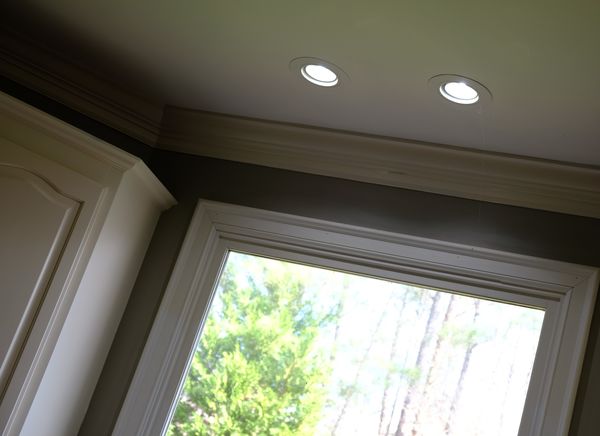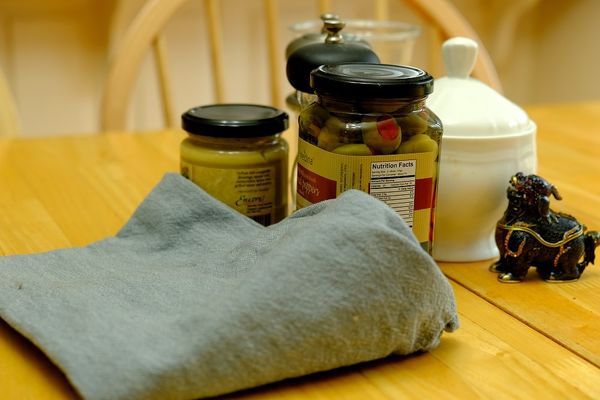Light Tenperatures
Feb 24, 2018 10:11:52 #
ecurb1105 wrote:
Does anyone know if LED lights emit in a continuous spectra?
Cool white, etc flurouescent as well as sodium vapor, Mercury vapor lighting all had discontious spectra emissions that we had to filter to correct back in the film era.
Cool white, etc flurouescent as well as sodium vapor, Mercury vapor lighting all had discontious spectra emissions that we had to filter to correct back in the film era.
You can find that online. LED spectrum is more continuous than flurorescent but not nearly as good as incandescent. I think with blue filter incandescent can be made much more like sunlight than LED.
Feb 24, 2018 10:43:51 #
LEAds have the annoying caracteristics of variance from manufacturing lot to lot and change in color due to the internal voltage applied to them( it's a physics problem). Kelvin temp. and color rendering index/ CRI are different and both are needed for accuracy. The tightest specs seem to be used in the LED lights in the motion pic industry; look at theatre mfgs.
Feb 24, 2018 11:30:39 #
I almost hate to bring this up but it has to be done because it’s sometimes confusing.
The warmer the color temperature, the colder the physical temperature.
For example, hotter stars are bluer; colder stars are redder.
So, higher Kelvin numbers imply colder colors; lower Kelvin numbers imply warmer colors.
I often have to go through all this when I’m buying bulbs. . . It’s so counterintuitive.
.
The warmer the color temperature, the colder the physical temperature.
For example, hotter stars are bluer; colder stars are redder.
So, higher Kelvin numbers imply colder colors; lower Kelvin numbers imply warmer colors.
I often have to go through all this when I’m buying bulbs. . . It’s so counterintuitive.
.
Feb 24, 2018 11:59:21 #
John_F wrote:
I have a very old cheat sheet card tucked into the bottom of the camera bag that lists lighting temperatures, in K
3000 incandescent
3700 incandescent
4000 fluorescent
4500 white fluorescent
5500 clear sunlight
6500 cloudy
7500 clear northern sky
I have two lines to put in for LED lighting
Any know the good numbers.
3000 incandescent
3700 incandescent
4000 fluorescent
4500 white fluorescent
5500 clear sunlight
6500 cloudy
7500 clear northern sky
I have two lines to put in for LED lighting
Any know the good numbers.
Anywhere between 2700 and 5600. Fixed or variable. Most household LEDs are 2700K. But the CRI is low. A Custom WB is the best approach. If you dial in the Kelvin rating, you’ll still have to adjust hue.
Feb 24, 2018 13:07:37 #
The Kelvin scale is also used to measure extreme cold, down to absolute zero. For instance, the background temperature of space has been determined to be about 2.7 degrees Kelvin. Below the visible light spectrum, Infrared(700K or so) and above the visible light spectrum, Ultraviolet, is the realm of radio waves, microwaves, and many other usefull applications.
Feb 24, 2018 13:37:39 #
Such as x-rays, gamma-rays.
tayho wrote:
The Kelvin scale is also used to measure extreme cold, down to absolute zero. For instance, the background temperature of space has been determined to be about 2.7 degrees Kelvin. Below the visible light spectrum, Infrared(700K or so) and above the visible light spectrum, Ultraviolet, is the realm of radio waves, microwaves, and many other usefull applications.
Feb 24, 2018 13:48:53 #
Kiwi1 wrote:
Yes I also investigated this recently for additona... (show quote)
I just replaced all my kitchen lighting with daylight led bulbs. They are a wonderful color, no blue or green or yellow, If anything there is a very slight pink cast to the light that makes food, furniture and people all gook good.
The ordinary replacement 60 Watt are Philips Daylight. The floods for overhead lighting in the kitchen are TorchStar 75watt repalcement listed as being 5000 K temperature. I cannot see a different color as compared to the natural light coming in the kitchen window with this lighting. In this photo, if you campare the color of the natural light coming in the window and illuminating the off-white cabinets, to the color of the lamps overhead you will see they are pretty much identical. The colors are quite accurate in this photo - you can see the green reflection of the grass on the ceiling.

Feb 24, 2018 13:51:28 #
John_F wrote:
Such as x-rays, gamma-rays.
And disrupter rays and phasers. Sorry, I couldn't help myself. 😀😇🤪
Feb 24, 2018 14:55:17 #
Nikon Shooter17
Loc: Glenwood, MN
burkphoto wrote:
Anywhere between 2700 and 5600. Fixed or variable. Most household LEDs are 2700K. But the CRI is low. A Custom WB is the best approach. If you dial in the Kelvin rating, you’ll still have to adjust hue.
Help out an early learner here...I think I know where in lightroom to go to adjust hue, but is there a consistent change? If I set the K to 5xxx for sunlight, what is a typical hue fix?
Sorry, not too clear of a question..any help?
Feb 24, 2018 17:24:02 #
John_F wrote:
I have a very old cheat sheet card tucked into the bottom of the camera bag that lists lighting temperatures, in K
3000 incandescent
3700 incandescent
4000 fluorescent
4500 white fluorescent
5500 clear sunlight
6500 cloudy
7500 clear northern sky
I have two lines to put in for LED lighting
Any know the good numbers.
3000 incandescent
3700 incandescent
4000 fluorescent
4500 white fluorescent
5500 clear sunlight
6500 cloudy
7500 clear northern sky
I have two lines to put in for LED lighting
Any know the good numbers.
The LED lights should be marked with the number on its label. I would use 5200K which is daylight. You have listed 5500 so since it has no 5200 I would use the 5500 setting. Until your chart gets to cloudy and clear northern sky the numbers appeared ok, I have never seen numbers for those settings just that Daylight bulbs for photo floods has always been marked 5200K.
Feb 24, 2018 18:37:31 #
Michael Barrus wrote:
Thats the one I have...I just started using the K White balance on my D7200...finally read what that was all about...I like the results over auto for sure...does anyone else use K on a regular basis?
I used the K white balance settings for a while. I found it was easy enough to use auto then change in post-processing. I find it rare that I need to change the white balance in post-processing.
Feb 24, 2018 18:43:27 #
Nikon Shooter17
Loc: Glenwood, MN
Dennis48 wrote:
I used the K white balance settings for a while. I found it was easy enough to use auto then change in post-processing. I find it rare that I need to change the white balance in post-processing.
Thanks!
Feb 25, 2018 05:10:21 #
John_F wrote:
I have a very old cheat sheet card tucked into the bottom of the camera bag that lists lighting temperatures, in K
3000 incandescent
3700 incandescent
4000 fluorescent
4500 white fluorescent
5500 clear sunlight
6500 cloudy
7500 clear northern sky
I have two lines to put in for LED lighting
Any know the good numbers.
3000 incandescent
3700 incandescent
4000 fluorescent
4500 white fluorescent
5500 clear sunlight
6500 cloudy
7500 clear northern sky
I have two lines to put in for LED lighting
Any know the good numbers.
You know, I'm going to have to try some LED lights for photography some time.
I do have and use cheaper hardware store non-photo quality CFL bulbs K 5000. They work fine actually.
LEDs come in many "colors". The small LED flash lights I have are very Blue! Glad to know the K Temp is marked on the package. Daylight sounds good, 5000 to 5500 K. I shoot RAW so it is not crucial that I know the CT or WB. Easy to set in ACR.
Feb 25, 2018 14:12:53 #
lamiaceae wrote:
You know, I'm going to have to try some LED lights for photography some time.
I do have and use cheaper hardware store non-photo quality CFL bulbs K 5000. They work fine actually.
LEDs come in many "colors". The small LED flash lights I have are very Blue! Glad to know the K Temp is marked on the package. Daylight sounds good, 5000 to 5500 K. I shoot RAW so it is not crucial that I know the CT or WB. Easy to set in ACR.
I do have and use cheaper hardware store non-photo quality CFL bulbs K 5000. They work fine actually.
LEDs come in many "colors". The small LED flash lights I have are very Blue! Glad to know the K Temp is marked on the package. Daylight sounds good, 5000 to 5500 K. I shoot RAW so it is not crucial that I know the CT or WB. Easy to set in ACR.
The CFL's do not put out a clean white light. The LED's are much better color. I have replaced nearly all the lighting in my house with the daylight LED's Here is a photo taken with daylight WB directly under daylight LED light. As you can see the WB agrees with the lighting. And in the previous image I posted on this thread, the lamp color agrees very well with natural daylight. So it does solve the problem of mixed lighting when you want to use some natural light, and artificial indoor room lighting and/or flash. The LED gives a nice artificial light with the same temp as natural and flash.

If you want to reply, then register here. Registration is free and your account is created instantly, so you can post right away.









